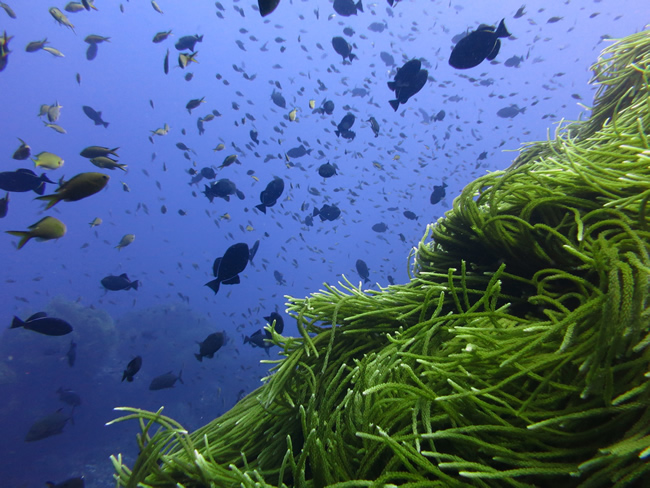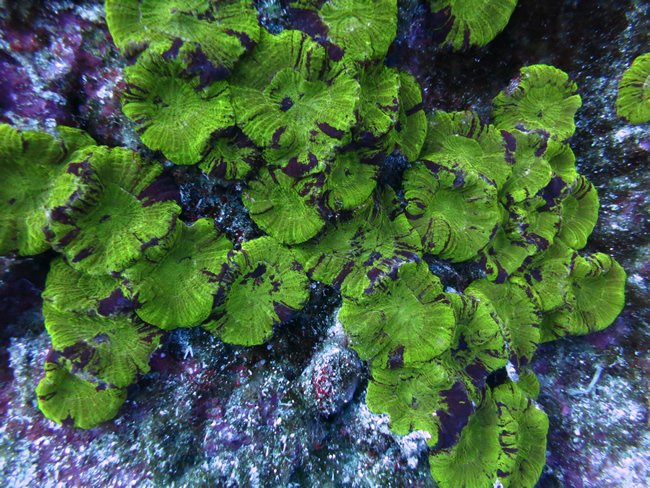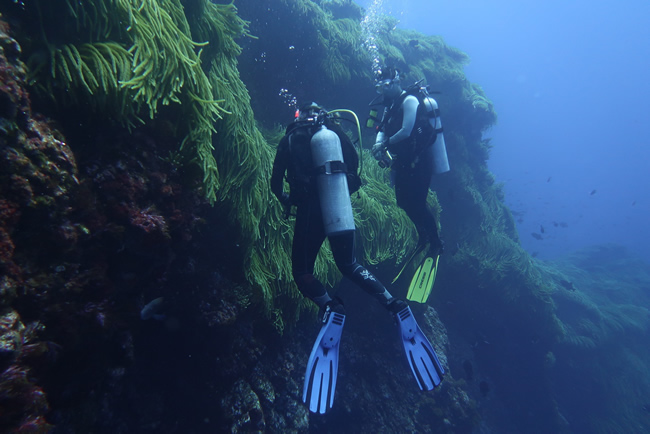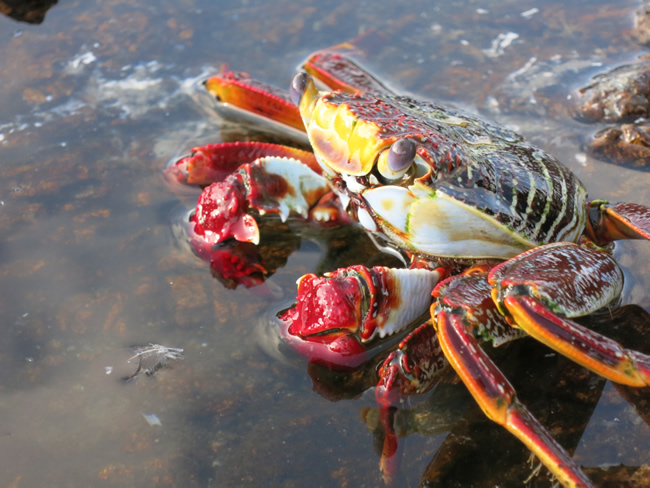|
Release St Peter and St Paul’s Archipelago
During last October took place the yearly expedition of the PELD-ILOC (Long-Term Ecological Research
Program) to St Peter and St Paul’s Archipelago (SPSPA). This year, the team was formed by Dr. Anaide Aued
(UFSC), Dr. Thiago Mendes (UNIFESP), M.Sc. Amana Garrido (UFRJ) and Mateus Silva (Brazilian Navy).
SPSPA (00°55’N, 29°22’W) consists of a group of ten small islands located in the equatorial Atlantic halfway
between Brazil and Africa. Given its diminished size and isolation, SPSPA is considered a natural laboratory for
the study and monitoring of marine communities.
Arriving in the archipelago is not an easy task; it takes four days in a 17 meter fishing boat. After that, the team
members stay sojourn for the next two weeks in the tiny scientific station maintained by the Brazilian Navy with
very limited communication with the mainland.
The main objectives of the expedition was to perform the annual monitoring of reef components and activities
included assessments of the benthic community and the fish assemblage, remote filming of feeding interactions
between fish and the benthos, evaluation of the population status of the crab Grapsus grapsus, collection of fish,
algae, cnidarians and other invertebrates.
The research conducted by our group is generating important information for this unique Atlantic reef system. Given
the recent creation of a new Marine Protected Area around SPSPA we hope that our research will help improve local
management and protection in face of escalating global impacts on the oceans.
Durante o ultimo mês de outubro foi realizada a expedição anual no PELD-ILOC (Programa Ecológico de Longa
Duração) ao Arquipélago de São Pedro e São Paulo ((00°55’N, 29°22’O).). Esse ano, a equipe foi formada pelos
seguintes membros: Dr. Anaide Aued (UFSC), Dr. Thiago Mendes (UNIFESP), M.Sc. Amana Garrido (UFRJ) e
Mateus Silva (Marinha do Brasil).
O ASPSP (00°55’N, 29°22’W) consiste em um grupo de dez pequenas ilhas localizadas no Atlântico equatorial no
meio do caminho entre Brasil e África. Por conta do seu tamanho pequeno e isolamento, o ASPSP é considerado
um laboratório natural para o estudo e monitoramento de comunidades marinhas.
Chegar no arquipélago não é uma tarefa fácil; demora-se quatro dias dentro de um barco de pesca com 17 metros
de comprimento. Depois disso, os pesquisadores permanecem na ilha durante as próximas duas semanas na
pequena estação científica mantida pela Marinha do Brasil com comunicação com o continente bastante limitada.
O principal objetivo desta expedição foi realizar o monitoramento anual dos componentes recifais e as atividades
incluíram amostragem da comunidade bentônica e da assembleia de peixes recifais, filmagem remota da
interação alimentar entre os peixes e o bentos, avaliação do estado populacional do caranguejo Grapsus grapsus,
coleta de peixes, algas, cnidários e outros invertebrados.
A pesquisa conduzida por nosso grupo está gerando importantes informações a respeito desse sistema recifal
único. Dado o recente estabelecimento de uma nova Área Marinha Protegida ao redor do ASPSP, esperamos que
nossa pesquisa auxilie no manejo e proteção locais principalmente em face do crescente impacto que os
oceanos sofrem ao redor do mundo.

Team at the SPSPA scientific station. / Equipe na estação científica do ASPSP.

Biodiversity of the SPSPA. / Biodiversidade do ASPSP.

Patch of the coral Scolymia wellsi. / Agrupamento do coral Scolymia wellsi

Divers collecting samples / Mergulhadoras coletando amostras.

The crab Grapsus grapsus in tide pool / Caranguejo Grapsus grapsus em um poça de maré.
|














